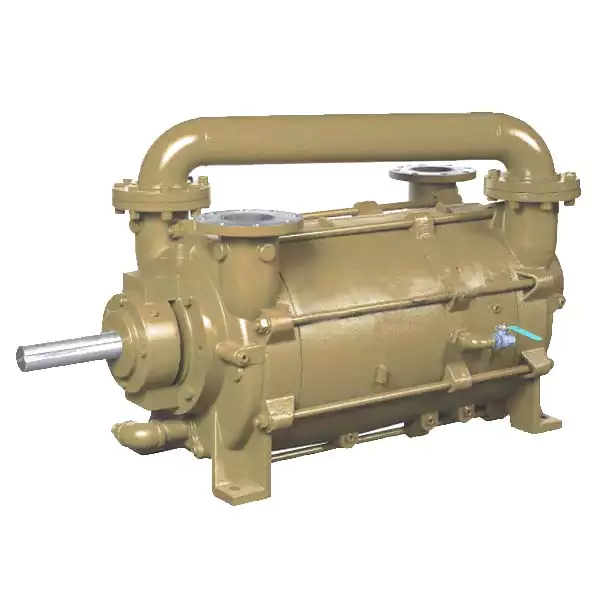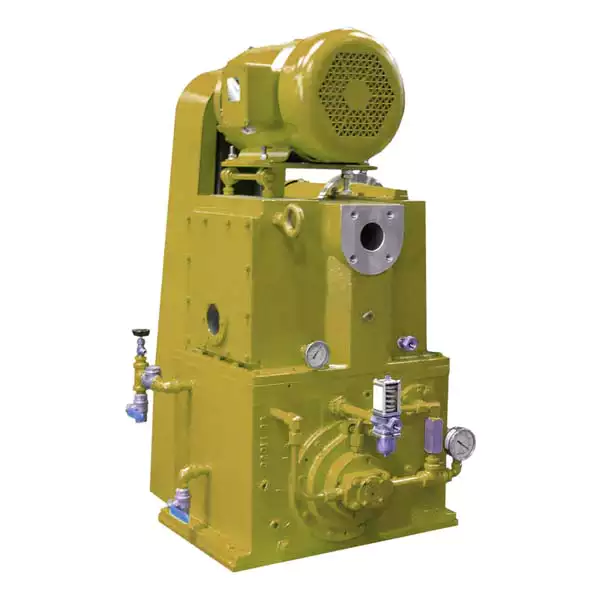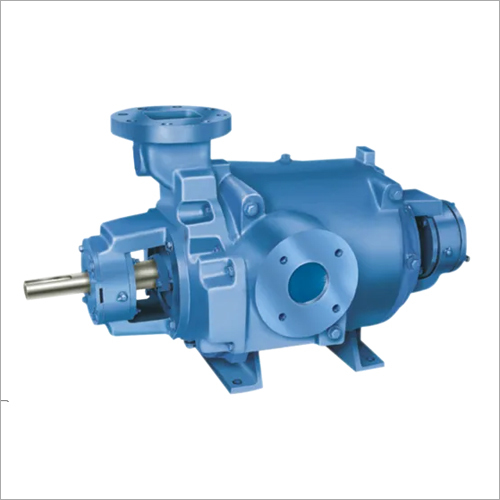产品说明
产品参数
| 模型 | 2xz-0.5 | 2xz-1 | 2xz-2 | 2xz-4 | |
| Pumping Speed L/S(m³/h) | 0.5(1.8) | 1(3.6) | 2(7.2) | 4(14.4) | |
| Extreme Pressure(Pa) | Partial Pressure | ≤6×10-2 | ≤6×10-2 | ≤6×10-2 | ≤6×10-2 |
| Full Pressure | ≤1.33 | ≤1.33 | ≤1.33 | ≤1.33 | |
| Rotating Speed r/min(50/60Hz) | 1400/1700 | 1400/1700 | 1400/1700 | 1400 | |
| Voltage(v) | 220 | 220/380 | 220/380 | 220/380 | |
| Motor Power(kw) | 0.18 | 0.25 | 0.37 | 0.55 | |
| Inlet Diameter (Outer Diameter)mm | G3/8(∅12) | G3/8(∅12) | G3/4(∅12) | G3/4(∅12) | |
| KF-16 | KF-16 | KF-25 | KF-25 | ||
| Noise(dBA) | 62 | 62 | 63 | 64 | |
| Oil volume (L) | 0.6 | 0.7 | 1 | 1.1 | |
| Size(mm) | 538*215*360 | 538*215*360 | 580*215*367 | 580*215*367 | |
| Gross/Net Weight(kg) | 17/16 | 18/17 | 22/20 | 25/22 | |
| 模型 | 2xz-2B | 2xz-4B | 2xz-6B | 2xz-8B | 2xz-15B | 2xz-25B | |
| Pumping Speed L/S(m³/h) | 2(7.2) | 4(14.4) | 6(21.6) | 8(28.8) | 15(54) | 25(90) | |
| Extreme Pressure(Pa) | Partial Pressure | ≤4×10-2 | ≤4×10-2 | ≤4×10-2 | ≤4×10-2 | ≤4×10-2 | ≤4×10-2 |
| Full Pressure | ≤1 | ≤1 | ≤1 | ≤1 | ≤1 | ≤1 | |
| Rotating Speed r/min(50/60Hz) | 1400/1700 | 1400/1700 | 1400/1700 | 1400/1700 | 1400/1700 | 1400/1700 | |
| Voltage(v) | 220/380 | 220/380 | 220/380 | 380 | 380 | 380 | |
| Motor Power(kw) | 0.37 | 0.55 | 0.75 | 1.5 | 1.5 | 2.2 | |
| Inlet Diameter (Outer Diameter)mm | G3/4 | G3/4 | ∅30 | ∅40 | ∅40 | ∅50 | |
| KF-25 | KF-25 | KF-25 | KF-40 | KF-40 | KF-50 | ||
| Noise(dBA) | 65 | 66 | 68 | 70 | 72 | 74 | |
| Oil volume (L) | 0.8 | 0.95 | 1-1.2 | 2.3-2.5 | 2.8-3.3 | 5.5-6.5 | |
| Size(mm) | 580*215*367 | 580*215*367 | 670*240*320 | 720*270*390 | 770*270*390 | 900*320*550 | |
| Gross/Net Weight(kg) | 22/20 | 25/22 | 46/40 | 68/52 | 75/62 | 90/70 | |
产品说明
Rotary Vane Vacuum Pump is the basic equipment used to remove gas from sealed containers. It can be used alone, also can be used for booster pump, diffusion pump, molecular pump before the pump, maintenance pump, titanium pump pre-pumping pump, It can be used for vacuum drying, CHINAMFG drying, vacuum degassing, vacuum packaging, vacuum adsorption, vacuum forming, coating, food packaging, printing, sputtering, vacuum casting, instruments, instruments, refrigerators, air conditioning lines and laboratories and other vacuum operations and supporting use.
· Due to the thorough low noise design and precision machining, so as to achieve low noise
· Specially designed gas valve is prepared to prevent the pump oil from mixing with water and prolong the service time of the pump oil
· Adopt similar product design, small size, light weight, low noise, easy to start
· Equipped with vacuum drying oven, freeze-drying machine, printing machinery
· It can be equipped with small-caliber adapter, KF interface and flange interface
Application
· Rotary Vane Vacuum Pump corollary use with freezer dryer to reach vacuum state, it’s an essential corollary equipment in medicine CHINAMFG drying, biology, food industry and agricultural products deep processing
· Rotary Vane Vacuum Pump corollary use with vacuum drying oven for maintaining vacuum state inside the oven, they mainly applies in powder drying and baking in vacuum condition
公司简介
Packaging & Shipping
常见问题
Q1. What is your products range?
• Industry water chiller, recirculating cooling chiller, rotary evaporator, alcohol recovery equipment, short path distillation kit, glass molecular distillation equipment, falling film evaporator, jacketed glass reactor and other lab equipment.
Q2. Are you trading company or manufacturer?
• We are professional manufacture of lab equipment and we have our own factory.
Q3. Do you provide samples? Is it free?
• Yes, we could offer the sample. Considering the high value of our products, the sample is not free, but we will give you our best price including shipping cost.
Q4. Do you have warranty?
• Yes, we offer 1 year warranty for the spare part.
Q5. How long is your delivery time?
• Generally it is within 7 working days after receiving the payment if the goods are in stock. Or it is 15 working days if thegoods are not in stock, depending on order quantity.
Q6. What is your terms of payment?
• Payment≤15,000USD, 100% in advance. Payment≥15,000USD, 70% T/T in advance, balance before shipment.
(If you are concerned about payment security for the first order, we advise you can place Trade Assurance Order via Alibaba. you will get 100% payment refund if we can’t meet agreed delivery time.)
/* 2571 年 1 月 22 日 19:08:37 */!function(){function s(e,r){var a,o={};try{e&&e.split(",").forEach(function(e,t){e&&(a=e.match(/(.*?):(.*)$/))&&1
| 售后服务: | Online Service Support |
|---|---|
| 保修: | 1 年 |
| Oil or Not: | Oil |
| 定制: |
可用
|
|
|---|
.shipping-cost-tm .tm-status-off{background: none;padding:0;color: #1470cc}
| 运费:
每台设备的估计运费。 |
关于运费和预计交货时间。 |
|---|
| 付款方式: |
|
|---|---|
|
首次付款 全额付款 |
| 货币 | US$ |
|---|
| 退货与退款: | 您可以在收到产品后 30 天内申请退款。 |
|---|

如何维护真空泵并排除故障?
真空泵的维护和故障排除对于确保其最佳性能和使用寿命至关重要。以下是详细说明:
真空泵的维护:
1.定期检查:定期对泵进行目视检查,检查是否有任何损坏、泄漏或异常磨损的迹象。检查电机、皮带、联轴器和其他组件是否正确对齐和处于正常状态。
2.润滑:遵循制造商的润滑指南。某些真空泵需要定期换油或润滑活动部件。确保使用正确类型和数量的润滑油。
3.油位检查:监控油封泵的油位,并将其保持在建议范围内。必要时按照制造商的说明添加或更换机油。
4.过滤器维护:定期清洁或更换过滤器,以防止堵塞并确保气流正常。过滤器堵塞会影响泵的性能并增加能耗。
5.冷却系统:如果真空泵有冷却系统,则应定期检查其清洁度和功能是否正常。根据需要清洁或更换冷却部件,以防止过热。
6.密封件和垫圈:检查密封件和垫圈是否有磨损或泄漏迹象。及时更换任何损坏或磨损的密封件,以保持气密性。
7.阀门维护:如果真空泵包括阀门,请定期检查和清洁,以确保正常运行并防止堵塞。
8.振动和噪音:监测泵是否有过度振动或异常噪音,这可能表明存在偏差、轴承磨损或其他机械问题。及时处理这些问题,防止进一步损坏。
排除真空泵问题:
1.真空度不足:如果泵未达到所需的真空度,请检查系统中是否存在泄漏、密封不当或密封件磨损。检查阀门、连接处和密封件是否泄漏,并根据需要进行修理或更换。
2.性能不佳:如果泵的性能不佳,请检查过滤器是否堵塞、润滑是否不足或部件是否磨损。清洁或更换过滤器,确保适当的润滑,必要时更换磨损的部件。
3.过热:如果泵过热,检查冷却系统是否堵塞或气流不足。清洁或更换冷却部件,并确保泵周围通风良好。
4.噪音或振动过大:噪音或振动过大可能表示对准不准、轴承磨损或其他机械问题。检查并修理或更换损坏或磨损的部件。确保旋转部件的正确对准和平衡。
5.电机问题:如果泵电机无法启动或运行不稳定,请检查电源、电气连接和电机部件。使用适当的电气测试设备测试电机,必要时咨询电工或电机专家。
6.耗油量过大:如果泵的耗油量很大,请检查是否有泄漏或其他可能导致机油损失的问题。检查密封件、垫圈和连接处是否泄漏,并根据需要进行修理。
7.异常气味:异常气味(如烧焦味)可能表示过热或其他机械故障。请及时处理,必要时咨询技术人员。
8.制造商指南:请务必参考制造商针对您的真空泵型号提供的维护和故障排除指南和建议。遵循规定的维护计划,必要时寻求专业协助。
遵循正确的维护程序并及时解决任何故障问题,就能确保真空泵的可靠运行和使用寿命。

Can Vacuum Pumps Be Used for Soil and Groundwater Remediation?
Vacuum pumps are indeed widely used for soil and groundwater remediation. Here’s a detailed explanation:
Soil and groundwater remediation refers to the process of removing contaminants from the soil and groundwater to restore environmental quality and protect human health. Vacuum pumps play a crucial role in various remediation techniques by facilitating the extraction and treatment of contaminated media. Some of the common applications of vacuum pumps in soil and groundwater remediation include:
1. Soil Vapor Extraction (SVE): Soil vapor extraction is a widely used remediation technique for volatile contaminants present in the subsurface. It involves the extraction of vapors from the soil by applying a vacuum to the subsurface through wells or trenches. Vacuum pumps create a pressure gradient that induces the movement of vapors towards the extraction points. The extracted vapors are then treated to remove or destroy the contaminants. Vacuum pumps play a vital role in SVE by maintaining the necessary negative pressure to enhance the volatilization and extraction of contaminants from the soil.
2. Dual-Phase Extraction (DPE): Dual-phase extraction is a remediation method used for the simultaneous extraction of both liquids (such as groundwater) and vapors (such as volatile organic compounds) from the subsurface. Vacuum pumps are utilized to create a vacuum in extraction wells or points, drawing out both the liquid and vapor phases. The extracted groundwater and vapors are then separated and treated accordingly. Vacuum pumps are essential in DPE systems for efficient and controlled extraction of both liquid and vapor-phase contaminants.
3. Groundwater Pumping and Treatment: Vacuum pumps are also employed in groundwater remediation through the process of pumping and treatment. They are used to extract contaminated groundwater from wells or recovery trenches. By creating a vacuum or negative pressure, vacuum pumps facilitate the flow of groundwater towards the extraction points. The extracted groundwater is then treated to remove or neutralize the contaminants before being discharged or re-injected into the ground. Vacuum pumps play a critical role in maintaining the required flow rates and hydraulic gradients for effective groundwater extraction and treatment.
4. Air Sparging: Air sparging is a remediation technique used to treat groundwater and soil contaminated with volatile organic compounds (VOCs). It involves the injection of air or oxygen into the subsurface to enhance the volatilization of contaminants. Vacuum pumps are utilized in air sparging systems to create a vacuum or negative pressure zone in wells or points surrounding the contaminated area. This induces the movement of air and oxygen through the soil, facilitating the release and volatilization of VOCs. Vacuum pumps are essential in air sparging by maintaining the necessary negative pressure gradient for effective contaminant removal.
5. Vacuum-Enhanced Recovery: Vacuum-enhanced recovery, also known as vacuum-enhanced extraction, is a remediation technique used to recover non-aqueous phase liquids (NAPLs) or dense non-aqueous phase liquids (DNAPLs) from the subsurface. Vacuum pumps are employed to create a vacuum or negative pressure gradient in recovery wells or trenches. This encourages the movement and extraction of NAPLs or DNAPLs towards the recovery points. Vacuum pumps facilitate the efficient recovery of these dense contaminants, which may not be easily recoverable using traditional pumping methods.
It’s important to note that different types of vacuum pumps, such as rotary vane pumps, liquid ring pumps, or air-cooled pumps, may be used in soil and groundwater remediation depending on the specific requirements of the remediation technique and the nature of the contaminants.
In summary, vacuum pumps play a vital role in various soil and groundwater remediation techniques, including soil vapor extraction, dual-phase extraction, groundwater pumping and treatment, air sparging, and vacuum-enhanced recovery. By creating and maintaining the necessary pressure differentials, vacuum pumps enable the efficient extraction, treatment, and removal of contaminants, contributing to the restoration of soil and groundwater quality.

Are There Different Types of Vacuum Pumps Available?
Yes, there are various types of vacuum pumps available, each designed to suit specific applications and operating principles. Here’s a detailed explanation:
Vacuum pumps are classified based on their operating principles, mechanisms, and the type of vacuum they can generate. Some common types of vacuum pumps include:
1. Rotary Vane Vacuum Pumps:
– Description: Rotary vane pumps are positive displacement pumps that use rotating vanes to create a vacuum. The vanes slide in and out of slots in the pump rotor, trapping and compressing gas to create suction and generate a vacuum.
– Applications: Rotary vane vacuum pumps are widely used in applications requiring moderate vacuum levels, such as laboratory vacuum systems, packaging, refrigeration, and air conditioning.
2. Diaphragm Vacuum Pumps:
– Description: Diaphragm pumps use a flexible diaphragm that moves up and down to create a vacuum. The diaphragm separates the vacuum chamber from the driving mechanism, preventing contamination and oil-free operation.
– Applications: Diaphragm vacuum pumps are commonly used in laboratories, medical equipment, analysis instruments, and applications where oil-free or chemical-resistant vacuum is required.
3. Scroll Vacuum Pumps:
– Description: Scroll pumps have two spiral-shaped scrolls—one fixed and one orbiting—which create a series of moving crescent-shaped gas pockets. As the scrolls move, gas is continuously trapped and compressed, resulting in a vacuum.
– Applications: Scroll vacuum pumps are suitable for applications requiring a clean and dry vacuum, such as analytical instruments, vacuum drying, and vacuum coating.
4. Piston Vacuum Pumps:
– Description: Piston pumps use reciprocating pistons to create a vacuum by compressing gas and then releasing it through valves. They can achieve high vacuum levels but may require lubrication.
– Applications: Piston vacuum pumps are used in applications requiring high vacuum levels, such as vacuum furnaces, freeze drying, and semiconductor manufacturing.
5. Turbo Molecular Vacuum Pumps:
– Description: Turbo pumps use high-speed rotating blades or impellers to create a molecular flow, continuously pumping gas molecules out of the system. They typically require a backing pump to operate.
– Applications: Turbo molecular pumps are used in high vacuum applications, such as semiconductor fabrication, research laboratories, and mass spectrometry.
6. Diffusion Vacuum Pumps:
– Description: Diffusion pumps rely on the diffusion of gas molecules and their subsequent removal by a high-speed jet of vapor. They operate at high vacuum levels and require a backing pump.
– Applications: Diffusion pumps are commonly used in applications requiring high vacuum levels, such as vacuum metallurgy, space simulation chambers, and particle accelerators.
7. Cryogenic Vacuum Pumps:
– Description: Cryogenic pumps use extremely low temperatures to condense and capture gas molecules, creating a vacuum. They rely on cryogenic fluids, such as liquid nitrogen or helium, for operation.
– Applications: Cryogenic vacuum pumps are used in ultra-high vacuum applications, such as particle physics research, material science, and fusion reactors.
These are just a few examples of the different types of vacuum pumps available. Each type has its advantages, limitations, and suitability for specific applications. The choice of vacuum pump depends on factors like required vacuum level, gas compatibility, reliability, cost, and the specific needs of the application.


editor by CX 2024-04-09